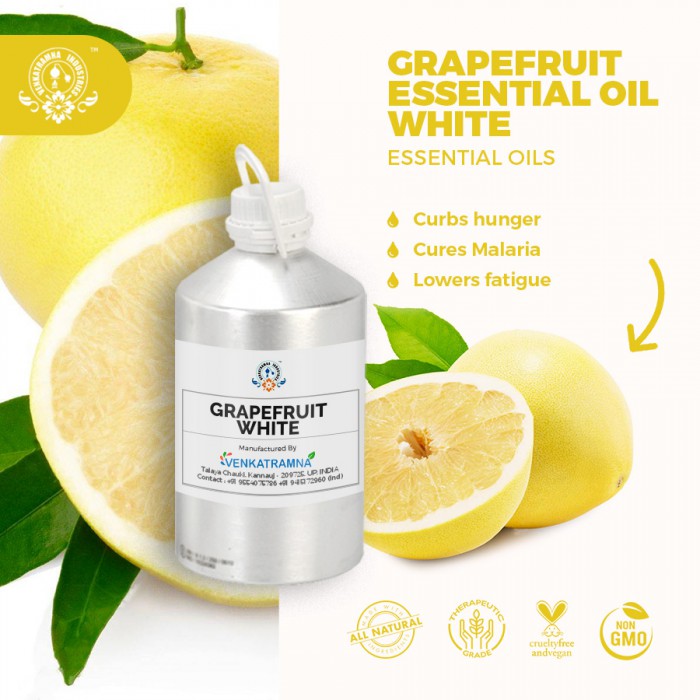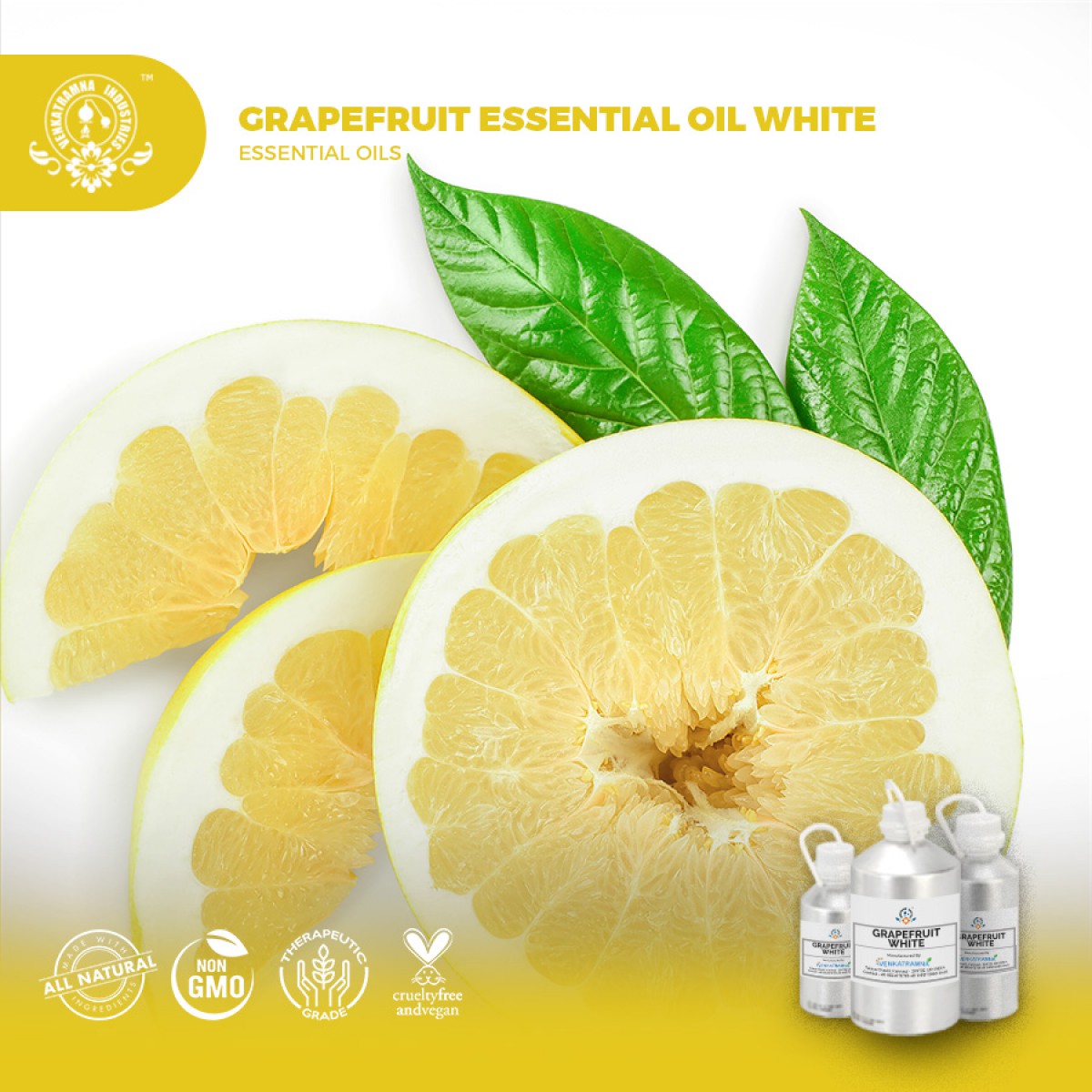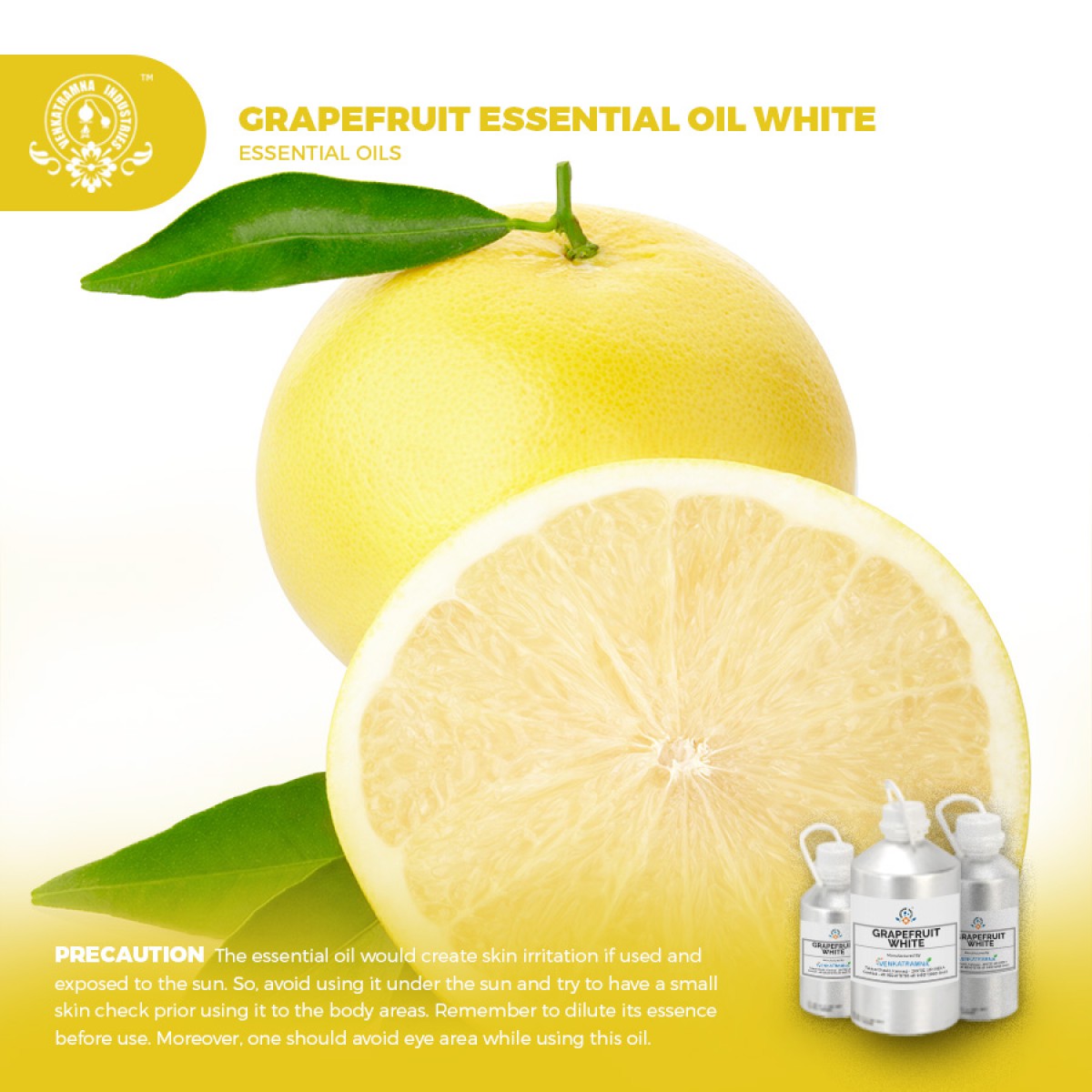Botanical Name: Citrus racemosa Common name: Pomelo, Chinese Grape fruit Read More
|
Botanical Name: |
Citrus racemosa |
|
Common name: |
Pomelo, Chinese Grape fruit |
|
Plant
family: |
Rutaceae |
|
Genus: |
Citrus |
|
Appearance/Color: |
Clear to greenish yellow liquid with thin consistency |
|
Odor: |
It has a fresh, medium
strength aroma that is slightly bitter marking the fruits character. |
|
Blends With: |
Other members of Citrus family like Rosemary, Cypress, Lavender,
Cardamom and Geranium are perfect blending combinations. In general, Grape
fruit essential oil white goes well with most of the spice oils. |
|
Origin: |
Mexico |
|
Source: |
Peel |
|
Method
of Extraction: |
Steam Distillation |
Grape fruit essential oil is one among many
popular oils of Citrus family having big demand in aromatherapy.
Grapefruit trees are large subtropical trees, original residents of Mexico. Trees produce sweet yellow to orange fruits. Fresh fruits are hand-picked to avoid mechanical damage to fruits. Grape fruit essential oil white is extracted by cold pressing the fruits. Oil glands are located deep within the peel making the extraction process little difficult. However, our approach of cold pressing ensures to retain the quality than other methods relying on heat-based extraction.
DISCLAIMER
The complete range of conditions
or methods of use are beyond our control therefore we do not assume any
responsibility and expressly disclaim any liability for any use of this
product. Information contained herein is believed to be true and accurate however,
all statements or suggestions are made without warranty, expressed or implied,
regarding accuracy of the information, the hazards connected with the use of
the material or the results to be obtained from the use thereof. Compliance
with all applicable federal, state, and local laws and local regulations
remains the responsibility of the user.
The FDA has not evaluated the
statements on this website. No claims are made by Venkatramna Industries as to
the medicinal value of any products from vriaroma.com or by us. The information
presented here is for educating our customers about the traditional uses of
essential oils and is not intended to diagnose, treat, cure, or prevent any
disease. You are responsible for understanding the safe application of these products.
If you have any questions, please call or email us for further information.
As per NAHA guidelines, New Directions Aromatics
(NDA) does not recommend the ingestion of essential oils. It is imperative to
consult a medical practitioner before using Essential Oils for therapeutic
purposes. Pregnant and nursing women and those taking prescription drugs are
especially advised not to use this product without the medical advice of a
physician. The oil should always be stored in an area that is inaccessible to
children, especially those under the age of 7.
History notes about Grape fruit reveal its oral
intake as an effective weight loss agent. Its characteristic medium aroma holds
an important place in aromatherapies.
Grape Fruit Essential Oil White has a tangy
and a slightly bitter aroma similar to that of orange. Its characteristic aroma
has an uplifting effect on mind acting as a stress reliever. It refreshes mood
and is a prime choice in aroma therapies.
Grape fruit essential oil in pharma
Grape fruit essential oil white has antiseptic
and antioxidant properties. Because of which it has useful effects on oily and
acne prone skin. Recent scientific studies on rodents showed that Grape fruit
essential oil has increased gastric vagal nerve activity.
Essence of Grape fruit essential oil
Limonene is a main component of Grape fruit
essential oil that is found to have significant controlling effects on hunger.
Grape fruit essential oil white promotes gastrointestinal
health and digestion. It also helps support a healthy metabolism.
COMMON USAGE
·
Relief
from fatigue
·
Ease
muscle stiffness
·
Suppress
hunger
·
Antiseptic
·
Anti-depressant
·
Stimulant
·
Reduce
constipation
·
Reduce
acidity
·
Treats
acne
Ingredients:
|
S.No |
Key
Constituents |
Composition
(%) |
|
1 |
Monoterpene
hydrocarbons |
96.93 |
|
2 |
Oxygenated monoterpenoids |
1.62 |
|
3 |
Sesquiterpene
hydrocarbons |
0.55 |
|
4 |
Oxygenated sesquiterpenes |
0.04 |
|
5 |
others |
0.60 |
The table depicts generalized categories of
constituents. ?-pinene, sabinene, myrcene, limonene, geraniol, linalool,
citronellal, decyl acetate and terpinen-4-ol are major individual chemical
components.
TOXICOLOGICAL
INFORMATION
Safety Summary
It is listed as non-toxic and non-irritant.
However, it can cause skin irritation when exposed to sunlight. So, it is
better to avoid using it under sun. Consumers are recommended to perform a
patch test before application if using it for first time.
Organ Specific Effects
Undiluted oil can irritate eyes, so it is
better to avoid exposure of Grape fruit essential oil white to areas near eyes.
Systemic Effects
·
Acute
toxicity: Non-toxic
·
Skin
irritation: May cause minor
irritation to skin when exposed to sun. Consumers are recommended to perform a
skin patch test prior to oil application.
·
Eye
irritation: May cause
irritation to eyes when used as undiluted formulation. Rinsing with water can
be helpful.
·
Chronic
toxicity: Non-toxic,
non-carcinogenic and non-mutagenic
·
Limonene
is a major constituent of Grape fruit essential oil white. Limonene is
non-toxic but its oxidised form can be slightly toxic and cause irritation in
dermatitis patients.
·
Grape
fruit essential oil white is stored in dark air tight containers to avoid
oxidation of limonene. To avoid irritation, consumers are recommended to avoid
old oxidized oils. It is recommended to use diluted form of Grape fruit
essential oil white.
·
Listed
as carcinogen: No
· Presence of allergen:
Limonene, linalol and citral are listed as allergens. So Grape fruit essential oil white can be
slightly allergic in some subjects.
ECOLOGICAL
INFORMATION
·
Ecotoxicity: Not available
·
Products
of Biodegradation:
Not available
·
Toxicity
to microorganisms: Grapefruit essential oil has potent antibacterial and
antimicrobial effects.Test-tube studies proved antimicrobial properties against
harmful bacteria like Staphylococcus aureus, Enterococcus faecalis, and Escherichia
coli. For rest other species data is not available.





 MSDS-Grapefruit.pdf
MSDS-Grapefruit.pdf





O. tryqh - 19 Aug 2022
5